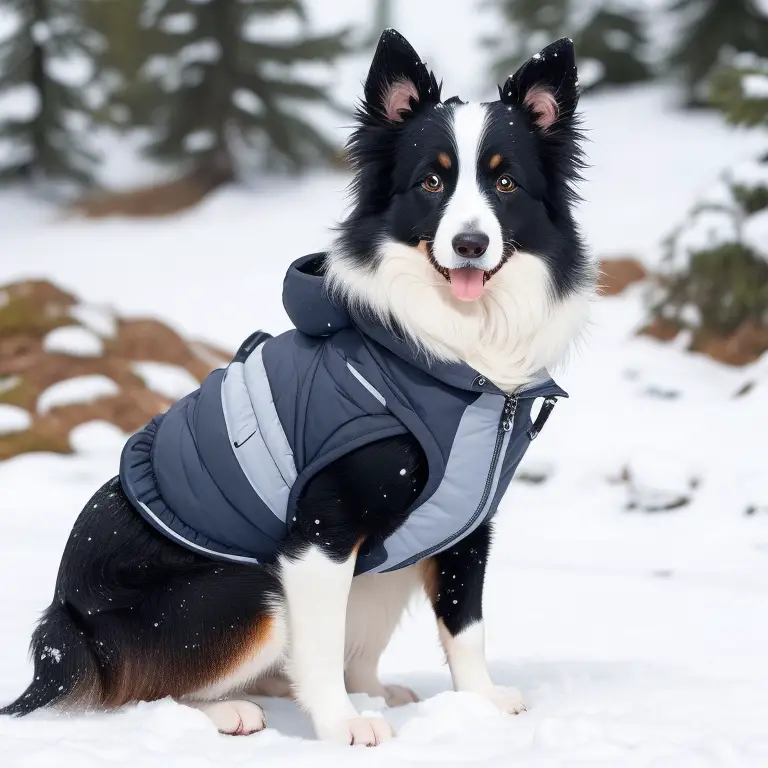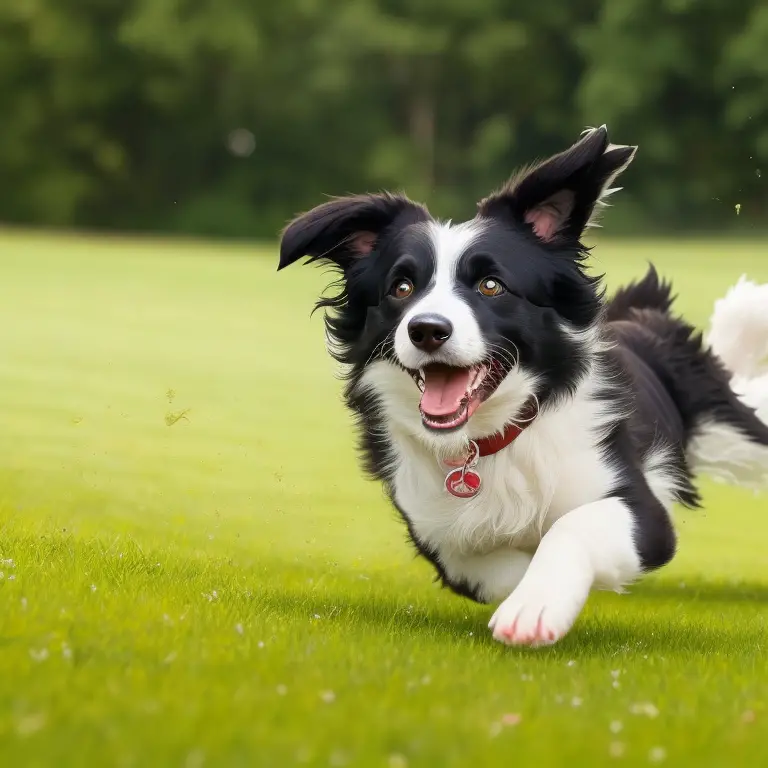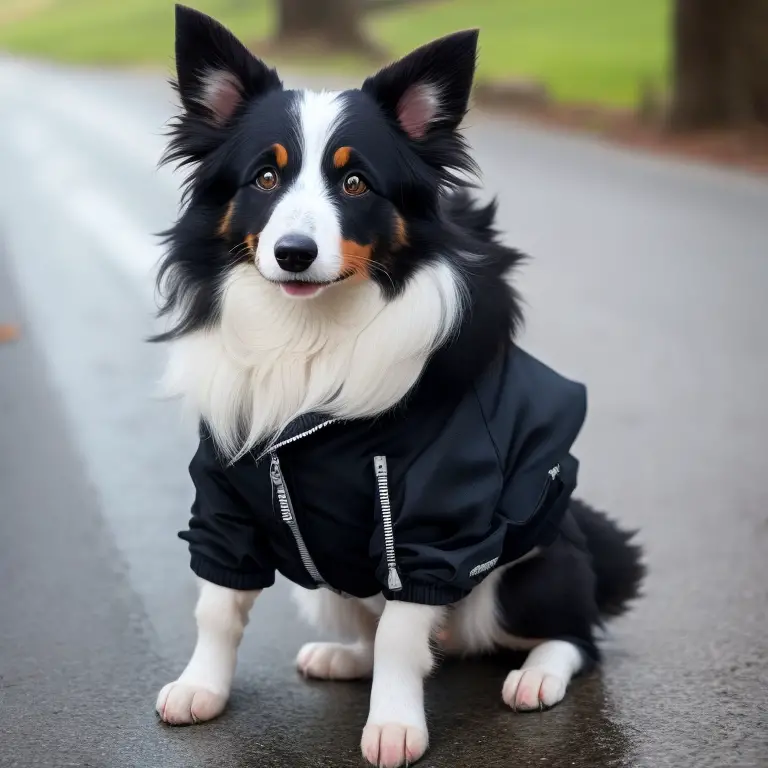How To Train a Border Collie?
So, you’ve welcomed a Border Collie into your life and now it’s time to start training. Congratulations, you’re in for a rewarding journey! Border Collies are intelligent and energetic dogs with incredible herding instincts, which makes them a joy to train.
But where do you start?
In this guide, I’ll take you through the basics of Border Collie training, from understanding their characteristics and energy needs to advanced training techniques, positive reinforcement, common challenges, and the importance of patience and consistency. By the end of it, you’ll be equipped with the knowledge and tools you need to train a well-behaved and happy Border Collie!
| Training Aspect | Training Tips |
|---|---|
| Basic Commands | 1. Start with teaching sit, stay, and come commands. 2. Use positive reinforcement through treats and praise. 3. Be consistent with the words and hand signals used for each command. |
| Herding | 1. Start with basic obedience training before introducing herding. 2. Introduce your Border Collie to livestock gradually. 3. Use verbal commands and whistles for directing your Border Collie during herding. |
| Agility Training | 1. Use obstacles like tunnels, jumps, and weave poles. 2. Gradually increase difficulty. 3. Use treats and praise for motivation. |
Understanding Border Collies
Characteristics of Border Collies
Border Collies are a highly energetic and intelligent breed of dogs. They were originally bred to herd sheep, but due to their intelligence and athleticism, they are now popular as pets and performance dogs in various dog sports.
Here are some key characteristics of Border Collies to keep in mind when planning their training:
- High Energy Levels: Border Collies are highly active dogs that require regular exercise and mental stimulation. They love to run, play, and work, and without sufficient exercise, they can become bored and destructive.
- High Intelligence: Border Collies are known for their intelligence and problem-solving abilities. They are quick learners and can pick up new commands and tricks easily.
- Strong Herding Instincts: Due to their herding heritage, Border Collies have a strong instinct to herd and control the movement of people and other animals. This can manifest as nipping, chasing, or herding behaviors, which can be challenging to train out of them.
- Sensitive and Responsive: Border Collies are highly attuned to their owners’ emotions and are receptive to positive reinforcement training techniques. They respond well to rewards-based training and thrive on praise and affection.
- Independent Thinkers: Border Collies are independent thinkers and may challenge their owners’ authority if they sense inconsistency or weakness in their trainer. As such, it is important to establish clear boundaries and consistent training routines to prevent behavioral issues.
Overall, Border Collies are highly intelligent, energetic, and responsive dogs that can make great pets and performance dogs with the right training and socialization. Understanding their unique characteristics is crucial for planning an effective and successful training program.

Energy and Exercise Needs
Border Collies are an active and energetic breed that has a high need for exercise. As a pet owner, it is essential to provide enough physical and mental stimulation to keep them healthy and mentally stimulated.
On average, a Border Collie requires at least 1-2 hours of daily exercise, but some individuals might require even more.
This breed thrives on activity, and they love to play games like frisbee or fetch. Regular exercise can help to keep them calm and prevent destructive behaviour that results from pent-up energy.
Aside from physical exercise, Border Collies benefit from mental stimulation to keep their minds engaged.
Activities like obedience training, agility, and herding trials are great options to maintain their mental well-being. If you are considering a Border Collie as a pet, it is crucial to keep in mind their energy and exercise needs to ensure they remain healthy, happy, and well-behaved.

Start Training Early
Basic Obedience Training
Let’s talk about basic obedience training and how to start training your Border Collie. It’s crucial to begin obedience training as early as possible to establish good behavior habits and promote a lasting bond between you and your dog.
Here are some basic obedience commands that you should teach your Border Collie:
- Sit – This is a simple command but very useful. It’s used to keep your Border Collie in a stationary position. Hold a treat over its head, say “sit,” and move the treat back over its head. Its natural instinct will be to follow the treat and sit down. Praise and reward your dog as soon as it sits.
- Stay – This command teaches your dog to remain in one spot until you release it. Start by commanding your dog to sit and then say “stay” while holding your hand up as a stop signal. Gradually increase the time and distance between you and your dog to challenge it, but remember to reward your dog for staying put.
- Come – This command helps you control your dog’s movements and provides a sense of safety. Encourage your dog to come to you by using an excited and welcoming tone of voice and reward it when it comes to you, even if it takes a bit longer.
- Down – This command teaches your dog to lie on its chest and relax, which is useful when you want your dog to calm down. Hold a treat over your dog’s nose and then move it to the ground. Your dog will follow the treat and lie down. Praise and reward your dog as soon as it lies down.
In summary, basic obedience training is essential for your Border Collie’s well-being and should be started early. Teach commands such as sit, stay, come, and down to ensure a long-lasting and healthy relationship with your dog.
AKC S.T.A.R. Puppy Program
If you’re considering training a Border Collie puppy, the AKC S.T.A.R. Puppy Program should be on your radar! This program is designed to develop responsible dog ownership and offer basic training for young dogs. The AKC S.T.A.R. Puppy Program teaches basic obedience commands such as sit, down, come, and leash walking.
Upon completion, your pup will receive an official AKC certificate of achievement and a medal.
This program is an excellent choice for those who are new to dog ownership or who want to ensure their puppy receives proper training and socialization at an early age. It’s essential to start training early for any dog, especially a Border Collie that can have a high energy level and be prone to destructive behavior if left untrained.
Joining the AKC S.T.A.R. Puppy Program is just one way to ensure that your puppy is getting the training and socialization they need, but it’s not a substitute for proper obedience training.
Remember, the program is just a stepping stone in your pup’s training journey. In the next section, we will go over the basics of obedience training to take your puppy’s training to the next level.

Advanced Training Techniques
Agility Training
Agility training is a fun and engaging way to keep your Border Collie mentally and physically stimulated. With their high energy levels and intelligence, agility training is a perfect way to challenge them.
To start agility training, it’s important to introduce your Border Collie to the agility equipment gradually.
This will allow them to become comfortable with each obstacle and learn how to navigate them safely. In the beginning, you may want to use treats and encouragement to motivate your Border Collie to try new obstacles and continue with their training.
Over time, you can gradually phase out the treats and rely on positive reinforcement and praise.
It’s essential to start with simple obstacles like jumps, tunnels, and weaving poles before moving on to more complex ones. Always remember not to push your Border Collie too hard and to make sure they are mentally and physically capable of handling the obstacles before moving on to more challenging ones.
In summary, agility training is an excellent way to challenge and engage your Border Collie.
By introducing them to agility equipment gradually, using positive reinforcement, and starting with simple obstacles before moving on to more complex ones, you can keep your furry friend mentally stimulated and physically fit.

Herding Training
Herding Training is a vital advanced technique for Border Collies. It is a natural instinct and a crucial element of their breeding.
Border Collies are famously known for their herding abilities, and this technique can make use of that.
Herding Training involves teaching your Border Collie how to work with livestock. The training develops your dog’s natural herding abilities and enhances them, allowing your pet to excel as a working dog.
The training emphasizes obedience, teaching your dog to follow commands and work in coordination with handlers.
It improves focus and decision-making skills while engaging in these activities, which is essential for their mental and physical exercise. Herding Training can be a challenging task, but with a patient and consistent approach, it can be an enriching and exciting experience for your pet.
Experts recommend seeking professional guidance to ensure that the training is at a proper pace and done appropriately.
Once your Border Collie has mastered the herding training technique, it can lead to many rewards, such as participating in herding competitions, farm work, and other jobs where herding skill is needed. Herding Training can be gratifying for both you and your pet, and it can help build an incredible bond between you two.
Trick Training
Trick training is a great way to challenge and stimulate your Border Collie’s mind while teaching useful and fun behaviors. When it comes to trick training, it’s important to start with basic commands like sit, stay, and come, then gradually progress to more complex trick training.
For example, you can teach your Border Collie to shake, roll over, play dead, or even jump through a hoop.
To succeed in trick training, use positive reinforcement techniques to encourage and reward desired behaviors. Treats, praise, and playtime are great motivators to get your Border Collie to perform the desired tricks.
Similarly, use repetition, consistency, and patience to ensure that your dog understands the commands and performs the actions correctly.
Another technique to try is clicker training. The clicker or marker signals to your Border Collie that they have done the right thing and will receive a reward.
This approach helps to reinforce good behavior and can even improve your dog’s learning speed.
If you encounter any training challenges, don’t give up. Instead, consider breaking down the trick into smaller parts, modifying your approach, or seeking the help of a professional dog trainer.
With enough consistency, patience, and training, you can teach your Border Collie a variety of impressive and entertaining tricks.
Positive Reinforcement
Rewards-Based Training
Positive reinforcement is a highly effective training technique that can be used to train Border Collies. By providing rewards such as treats, toys, and praise, we can encourage desired behaviors and establish a strong bond with our furry friends.
Rewards-based training is not just about giving treats; it’s about timing and consistency.
We should reward our pups immediately after they display the desired behavior, and we should always use the same reward. This will help them associate the desired behavior with the reward, making it more likely to happen again.
Clicker training is one popular type of rewards-based training, where a click sound is used to signal the desired behavior, followed immediately by a reward.
It’s an effective method for teaching new tricks and behaviors. Positive reinforcement training is not just more humane than punishment-based methods, but it has also been proven to be more effective in the long term.
Focusing on the positive instead of the negative will create a happier, healthier, and more obedient pet.
Incorporating rewards-based training into our Border Collie’s training program will not only improve their behavior and obedience, but it will also enhance their overall happiness and our relationship with them.

Clicker Training
Positive reinforcement is an essential training technique that rewards good behavior in your Border Collie. One of the most efficient forms of positive reinforcement training is called clicker training.
It is a science-based training method that uses a clicker as a marker to indicate the moment your dog performs a desired behavior.
Clicker training is all about communication, timing, and consistency. To start clicker training, you need a clicker and some small treats that your Border Collie loves.
Clicker training helps your dog learn new commands, tricks, and behaviors by associating the sound of the clicker with a reward.
When your dog performs a desired behavior, click the clicker immediately, then give your dog a treat. Continuously repeat the process until your dog starts to associate the clicker with good behavior and a reward.
Clicker training helps to develop a strong bond between you and your Border Collie.
It’s a fun and exciting way to train your dog without using physical corrections or negative reinforcement. Remember to always keep the training sessions short and sweet.
Practice each command or behavior in a quiet environment with no distractions before advancing to a noisy place with distractions.
With patience and consistency, your Border Collie will soon be a master at clicker training.

Common Training Challenges
Separation Anxiety
Separation anxiety is a common issue among Border Collies, especially when they are left alone for longer periods. It is a condition in which dogs feel anxious and stressed when separated from their owners or other familiar people.
Symptoms of separation anxiety can range from destructive behavior, such as chewing furniture or digging up the yard, to excessive barking or howling.
If your Border Collie shows signs of separation anxiety, it’s important to address the issue as soon as possible. Start by slowly acclimating your dog to being alone for short periods and gradually increasing the time apart.
Providing plenty of exercise, mental stimulation, and creating a comfortable and secure environment for your dog can also help reduce anxiety.
Consider using special dog toys that help to calm them down and provide comfort, such as a Kong filled with peanut butter or treats. It’s important to avoid punishing your dog for exhibiting separation anxiety, as this can exacerbate the problem and cause further stress.
Seeking the assistance of a professional dog trainer or behaviorist can also be an effective solution for addressing separation anxiety in Border Collies.
With patience, consistency, and positive reinforcement, you can help your Border Collie overcome separation anxiety and lead a happier and more well-balanced life.

Excessive Barking
Excessive barking is a common training challenge with Border Collies. These dogs have a strong herding instinct, and barking is often their way of communicating and controlling their surroundings.
To address excessive barking, it’s important to identify the root cause.
Is your Border Collie bored, anxious, or seeking attention? Once you determine the underlying issue, you can begin to address it.
Positive reinforcement training techniques, such as rewards-based training and clicker training, are effective in discouraging excessive barking.
When your dog remains quiet, reward them with treats, affection, or praise. This reinforces the behavior of not barking.
It’s also vital to consistently and patiently train your Border Collie to reduce excessive barking.
Training sessions should be regular and structured, with clear communication and expectations. With consistency and time, excessive barking can be significantly reduced.
Remember, excessive barking is a natural behavior for Border Collies, and their instincts can be challenging to overcome.
But with patience, positive reinforcement, and consistent training, you can help your Border Collie learn to communicate without excessive barking.

Herding Instincts
When it comes to Border Collies, their herding instincts are deeply ingrained in their DNA. It is a natural behavior for them to gather and control moving objects, whether it’s a flock of sheep or a group of children playing in the park.
While this instinct can be beneficial in some situations, it can also be problematic when not properly managed.
A Border Collie with untrained herding instincts can become overly-protective, anxious, and difficult to control. To handle this common training challenge, it’s essential to incorporate herding training into your dog’s overall training routine.
Herding training helps to redirect your dog’s instincts, keep them engaged and physically active, and teach them when it’s appropriate to control their impulse to herd.
Keep in mind that it’s crucial to teach your Border Collie to listen to your commands, even when their herding instincts kick in. Consistent training and positive reinforcement techniques will help build a stronger bond between you and your dog, and allow you to gain better control over their behavior.
In summary, Border Collies have a strong instinct to herd, and this can be challenging to control without proper training.
But with patience and consistency, you can redirect their instincts by incorporating herding training into their overall training routine and teach them when it’s appropriate to herd and when it’s not.

Consistency and Patience
Importance of Consistency
Consistency is one of the most crucial factors in training a Border Collie. It is essential to establish consistency in your training methods to help your Border Collie understand what is expected of them.
Without consistency, your Border Collie may become confused, and training will become much more difficult.
You should consistently reinforce desired behaviors while ignoring unwanted behaviors. Consistent routines and schedules for feeding, playtime, and training sessions can help your Border Collie adapt much more quickly to their training routine and help them learn much faster.
It’s also important to note that consistency doesn’t just apply to training your Border Collie.
You should also be consistent in your reactions and discipline when your Border Collie misbehaves. If you respond to your Border Collie’s bad behavior differently each time, it can be challenging for them to grasp what is expected of them.
Maintaining a consistent reaction to good and bad behavior can help your Border Collie learn much easier.
In summary, consistency is a crucial component of training your Border Collie. Consistent routines, reinforcement, discipline, and reactions allow your dog to understand what is expected of them and makes training much more efficient and effective.
Dealing with Frustrations and Setbacks
When training a Border Collie, it’s important to remember that setbacks and frustrations are common. However, it’s crucial to remain consistent and patient throughout the training process.
Consistency means sticking to a regular training schedule and using the same commands and rules every time.
Patience means not getting frustrated even when it seems like the dog isn’t making much progress. Here are some tips for dealing with frustrations and setbacks during training:
- Take breaks: If you’re feeling frustrated or if your dog is getting impatient, take a break from training. Go for a walk or play with your dog for a few minutes before returning to training.
- Focus on small wins: Celebrate even the smallest successes during training. If your dog masters a new command or performs a trick successfully, reward them and praise them.
- Keep training sessions short: Border Collies have a short attention span, so it’s important to keep training sessions short and sweet. Training for 10-15 minutes at a time is usually sufficient.
- Don’t punish your dog: Punishing your dog for not following commands can be counterproductive. Instead, focus on positive reinforcement by rewarding good behavior.
Remember, training a Border Collie requires patience and consistency. Stay positive, and don’t get discouraged if training doesn’t always go as planned.
With time and effort, your dog will learn and grow.
Conclusion
Border Collies are a highly intelligent and energetic breed that require structured training to lead a happy and fulfilling life. Starting with basic obedience training and moving on to more advanced techniques such as herding, agility, and trick training can keep both the dog and owner engaged and mentally stimulated.
Positive reinforcement through rewards-based training and clicker training can help reinforce desirable behaviors while common challenges such as separation anxiety and herding instincts can be addressed with patience and consistency.
Ultimately, a well-trained Border Collie can be a rewarding and satisfying companion that brings joy and companionship to its owners for years to come. By following the techniques and tips outlined in this article, you give your Border Collie the best chance to become a well-trained and happily integrated family member.







